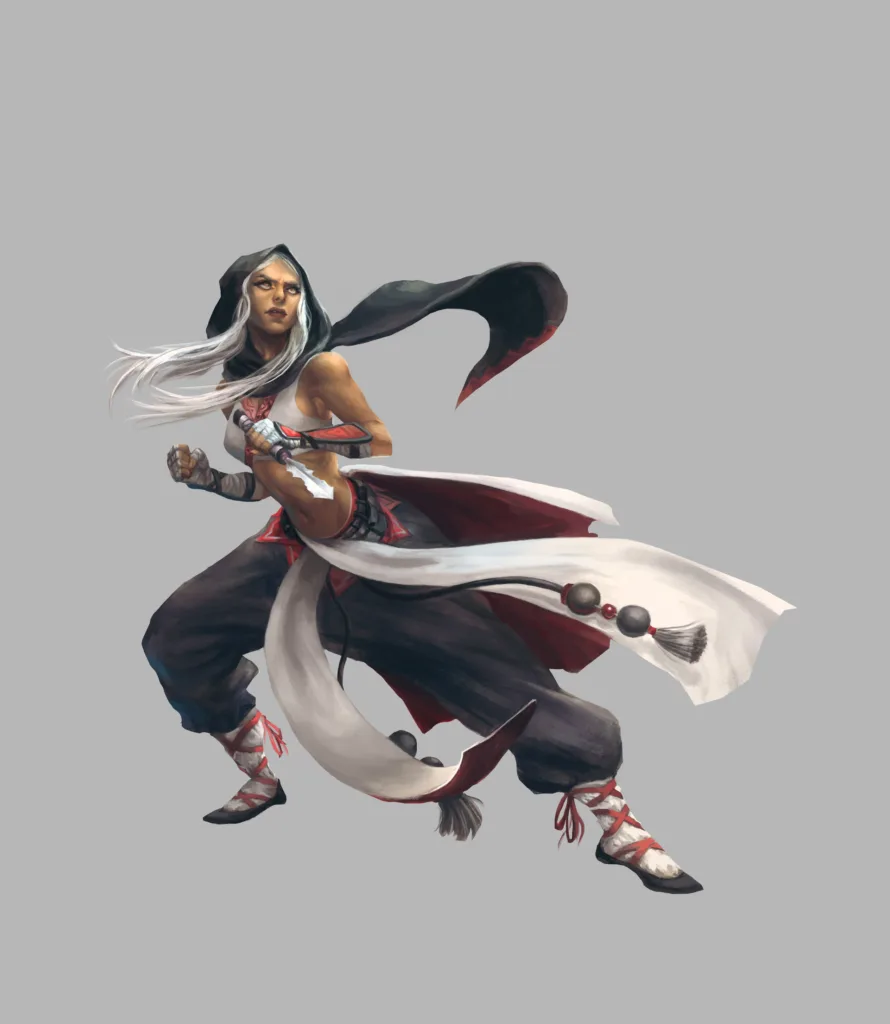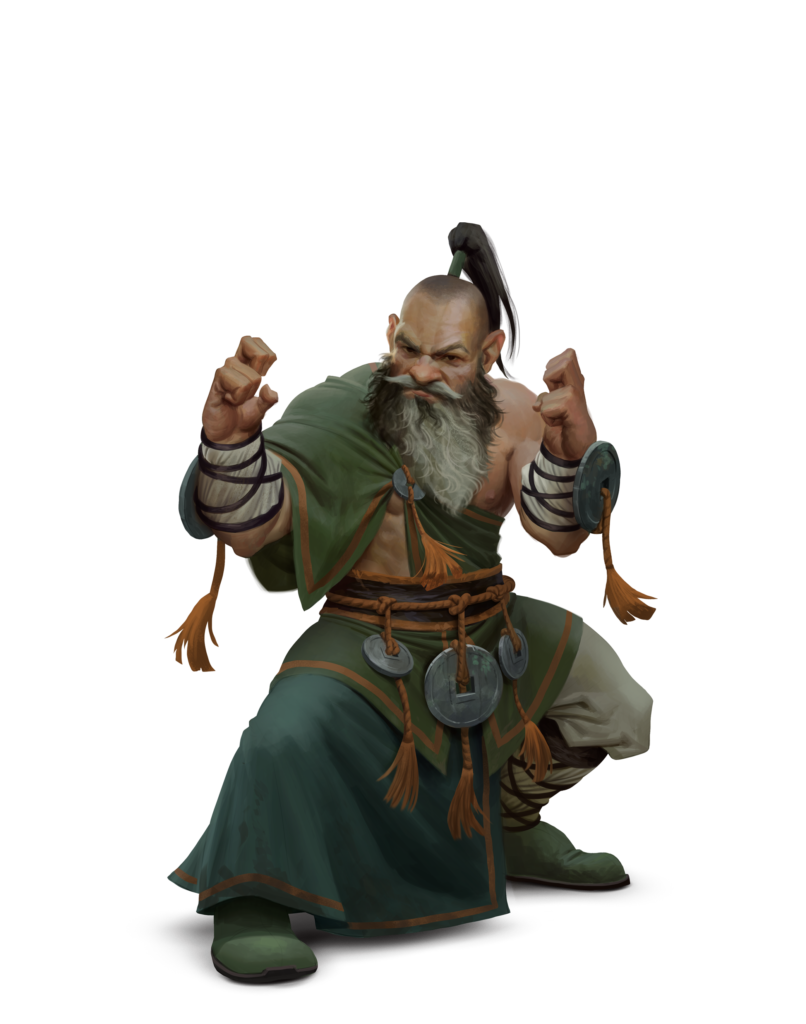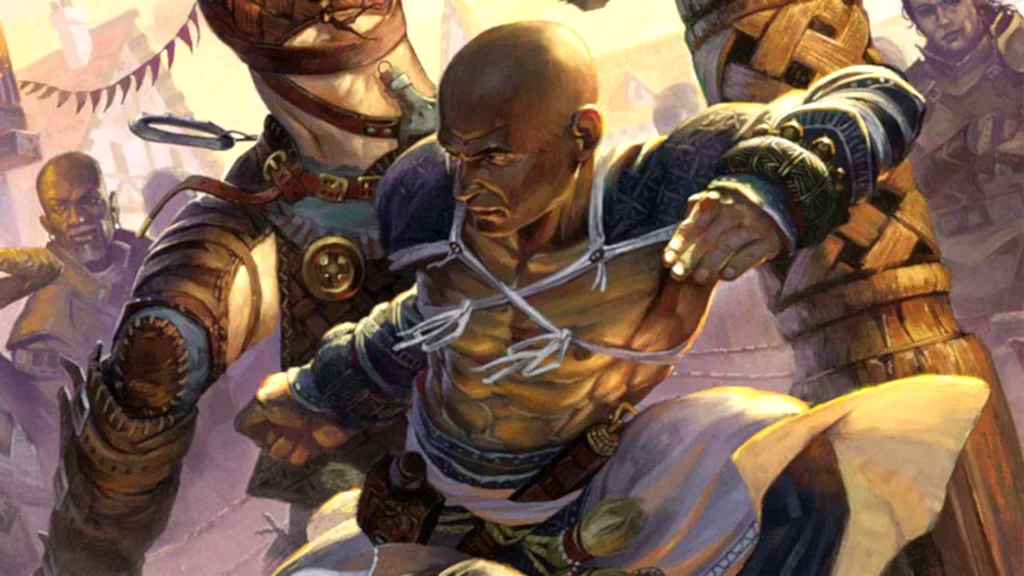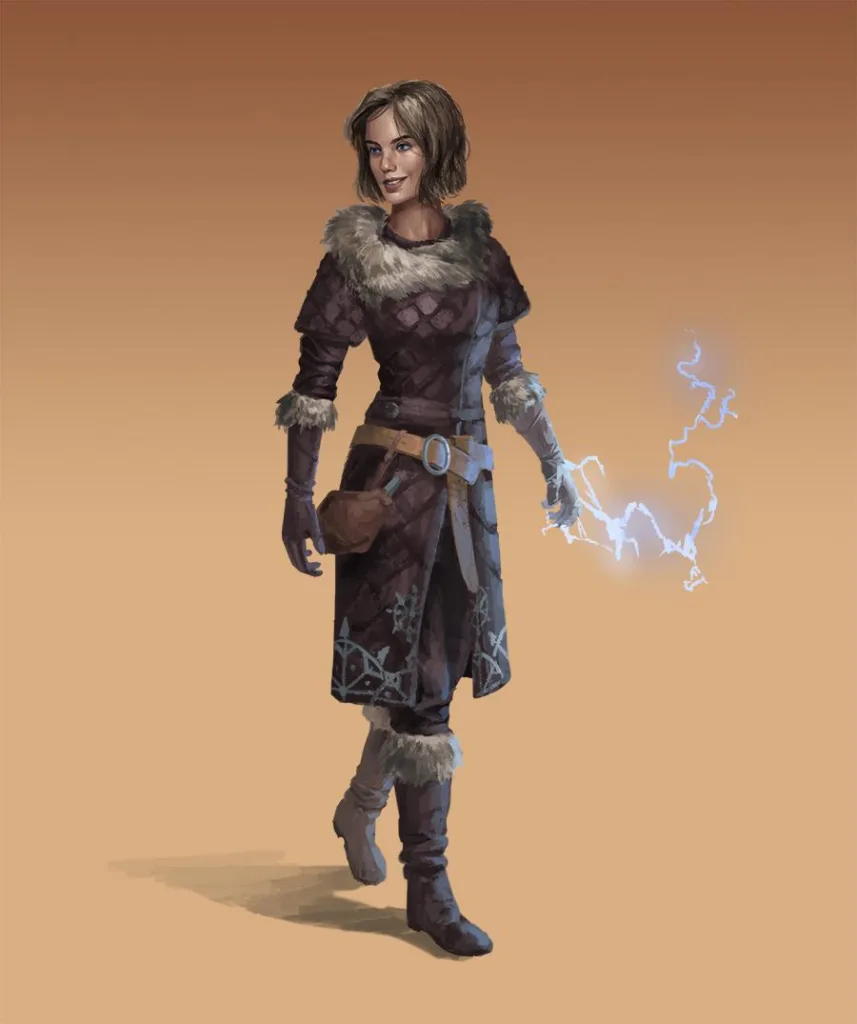Unarmed attacks, as the name suggests, are attacks made without the use of weapons. They can be punches, kicks, headbutts, or any other forceful blows that don’t involve the use of a weapon. In most cases, unarmed attacks deal bludgeoning damage, which can be useful against opponents with a vulnerability to this type of damage.
One of the most interesting aspects of unarmed attacks is that they allow you to add your proficiency bonus to the attack roll. This means that if you’re proficient in unarmed attacks, you’ll get an additional bonus to your attack roll, making it more likely that your strike will hit its target.
So, do monks get proficiency in unarmed attacks? The answer is yes. Monks are proficient in simple weapons, shortswords, and their unarmed strikes. In addition, they have a special ability called Martial Arts, which allows them to use Dexterity instead of Strength for the attack and damage rolls of their unarmed strikes and monk weapons.
The proficiency in unarmed attacks is especially important for monks, as they rely heavily on these attacks in combat. Monks are knon for their speed and agility, and their unarmed attacks allow them to make quick strikes against their opponents without the need for weapons. Their proficiency in these attacks, combined with their ability to use Dexterity for their attack and damage rolls, makes them highly effective in combat.
It’s also worth noting that unarmed attacks can be enhanced with magical effects, just like weapons. For example, a monk’s unarmed strikes can be enchanted with magical effects like flaming or frost. This makes them even more deadly in combat, as they can deal additional damage or inflict status effects on their opponents.
Unarmed attacks are a powerful tool in any combatant’s arsenal. They allow you to make quick strikes against opponents without the need for a weapon, and their proficiency bonus makes them even more effective. And for monks, proficiency in unarmed attacks is essential, as it’s a key part of their combat style. So, whether you’re a monk or any other type of fighter, don’t overlook the power of unarmed attacks in your battles.
Do Unarmed Attacks Receive Proficiency Bonuses?
Yes, you do add your proficiency bonus to unarmed attacks. Unarmed strikes are considered melee weapon attacks and thus benefit from the same bonuses as any other melee weapon attack roll. This means that you add your strength modifier to the attack roll, as well as your proficiency bonus. Your proficiency bonus represents your character’s training and experience, and reflects their ability to effectively wield their unarmed strikes in combat. So, if you’re proficient in unarmed strikes, you’ll have a better chance of hitting your target and dealing damage.

Do Monks Receive a Dexterity Bonus to Unarmed Strikes?
Yes, monks get to use their Dexterity modifier instead of their Strength modifier for both the attack and damage rolls of their unarmed strikes and monk weapons, thanks to the Martial Arts feature. This means that if a monk has a higher Dexterity score than Strength score, they can still deal significant damage with their unarmed strikes, making them formidable hand-to-hand combatants. Additionally, as monks gain levels, they can further enhance their unarmed strikes with abilities such as Ki-Empowered Strikes and Stunning Strike.
Proficiencies Gained by Monks
A monk in Dungeons and Dragons 5th edition gets a set of proficiencies that reflect their training and lifestyle. They are not proficient in any armor, but they are proficient in simple weapons and shortswords, which they use to strike at their foes with precision and speed. In addition, a monk can choose one type of artisan’s tools or one musical instrument, reflecting their pursuit of artistic expression outside of combat.
In terms of saving throws, a monk is proficient in Strength and Dexterity, which allows them to resist physical attacks and dodge incoming strikes. For skills, a monk can choose two from a list of six options: Acrobatics, Athletics, History, Insight, Religion, and Stealth. These skills reflect the monk’s ability to move with grace and agility, their knowledge of history and religion, and their ability to read people and situations with insight.
Overall, the proficiencies of a monk in D&D 5th edition reflect their unique blend of martial prowess, artistic expression, and spiritual discipline.
Unarmed Attack Proficiency in D&D 5e
Yes, in 5e, you can be proficient in unarmed attacks. Using an unarmed strike, which is a punch, kick, head-butt, or similar forceful blow, you can make a melee weapon attack without using an actual weapon. On a hit, your unarmed strike deals bludgeoning damage equal to 1 + your Strength modifier. You are considered proficient with your unarmed strikes, meaning you add your proficiency bonus to the attack roll when you make an unarmed strike. This proficiency can be gained through class features or feats, such as the Monk class, which specializes in unarmed combat.
The Mechanics of Monk Unarmed Attacks
Monk unarmed attacks are a special type of melee attack that can be made by a character who has levels in the monk class. Unlike oter melee attacks, monk unarmed strikes do not require the use of a weapon, and instead rely on the character’s own body as a weapon.
When making a monk unarmed strike, the character uses an open hand or fist to strike their opponent. The damage dealt by the strike is determined by the character’s monk level and their proficiency bonus, and typically increases as the character gains levels in the class.
One unique feature of monk unarmed strikes is that they are considered off-hand weapons. This means that a character can use a monk unarmed strike to make attacks even while holding another one-handed weapon in the other hand. Additionally, the character can use the other one-handed weapon to make attacks even if it isn’t an off-hand weapon.
Overall, monk unarmed strikes are a versatile and powerful option for characters who specialize in hand-to-hand combat, and can be a valuable asset in a variety of situations.

Using Unarmed Strikes to Make Contact
To hit with an unarmed strike, you add your proficiency bonus and your Strength modifier to your attack roll. Your proficiency bonus is determined by your level and represents your training and experience in combat. Your Strength modifier is derived from your Strength score and measures your physical power and prowess in combat. When you make an unarmed strike, you roll a d20 and add your proficiency bonus and Strength modifier to the roll. If the total is equal to or greater than the target’s armor class, you successfully hit them with your unarmed strike.
Do Monks Utilize Dexterity or Strength?
Monks primarily rely on Dexterity (Dex) rather than Strength (Str). Dex is the key ability score for the Monk class, as it determines their attack rolls, damage, and Armor Class (AC). In addition, high Dex also helps Monks avoid area-of-effect damage, which can be especially useful given their relatively low hit points (d8). While some Monks may choose to use Str for specific builds or feats, most Monks will prioritize Dex over Str. Overall, Dex is the primary ability score that Monks use in combat and is essential to their success in battle.
Does Monk Fists Qualify as Finesse Weapons?
No, Monk fists do not count as finesse weapons. While the martial arts feature allows monks to use Dexterity instead of Strength for their unarmed strikes and monk weapons, it does not make them finesse weapons. Finesse weapons are a specific category of weapons that allow the user to choose between using Strength or Dexterity for attack and damage rolls. Therefore, a monk’s fists are not considered finesse weapons, but they can still benefit from the monk’s martial arts feature, allowing them to use their Dexterity for attack and damage rolls.
Monks’ Proficiency in Weapons
Monks are proficient in a variety of weapons, including the club, dagger, handaxe, light crossbow, heavy crossbow, quarterstaff, shuriken, kama, and sling. This means that they are skilled in usng these weapons effectively in combat. Monks are known for their physical prowess and agility, and they use their proficiency in these weapons to enhance their fighting abilities. Each weapon has its own unique characteristics and advantages, and monks are trained to use them to their fullest potential. Overall, monks have a wide range of weapons at their disposal, allowing them to adapt to different combat situations and engage in battle with confidence.

What Is the Best Stat for a Monk?
The stat that is best for a monk is Dexterity. As one of the most agile and nimble classes in the game, the monk relies heavily on their ability to dodge attacks and land hits on their opponents. Dexterity is the key attribute that governs both their AC (Armor Class) and their attack rolls, making it an essential stat for any monk lookig to be effective in combat.
In addition to boosting the monk’s AC and attack rolls, Dexterity also increases their damage rolls. This is because the monk’s martial arts attacks use their Dexterity modifier instead of their Strength modifier, making it a crucial stat for dealing damage.
Furthermore, Dexterity can also improve a monk’s ability to perform certain skills, such as Stealth and Acrobatics. These skills can be incredibly useful for a monk who wants to move around the battlefield quickly and quietly, or who wants to perform acrobatic feats to escape danger or gain an advantage in combat.
Overall, Dexterity is the most important stat for a monk, and should be prioritized above all other attributes.
The Strongest Type of Monk
The strength of a monk subclass largely depends on personal preference and playstyle. However, the Way of the Long Death is often considered one of the strongest monk subclasses due to its unique abilities centered aroud harnessing the power of death. The subclass grants players temporary hit points each time an enemy dies within five feet of them, which can be incredibly useful in combat. Additionally, the subclass features abilities such as Touch of Death, which allows players to deal extra damage and potentially kill enemies outright, and Mastery of Death, which grants players the ability to cheat death and continue fighting even after their hit points have dropped to zero. While other monk subclasses have their own strengths and weaknesses, the Way of the Long Death stands out for its powerful and unique abilities.
Beneficial Skills for a Monk
If you’re playing as a Monk in Diablo 3, there are several skills that you should focus on to maximize your effectiveness in combat. The primary skill that you should use is Fists of Thunder, which is unlocked right from level 1. This skill allows you to quickly close the distance between you and your enemies, and deal a lot of damage in the process.
Another great skill to use is Mystic Strike, which becomes availale at level 15. This skill allows you to strike multiple enemies at once, and deals a lot of damage to each of them. It’s especially useful when you’re facing large groups of enemies, as it can quickly whittle down their health bars.
Cyclone Strike is another important skill that you should consider using. This skill allows you to pull enemies towards you, allowing you to control the flow of battle and keep your enemies grouped together. This can be especially useful when you’re facing large groups of enemies, as it can allow you to take them out quickly and efficiently.
As you progress further in the game, you’ll unlock Inner Sanctuary at level 38. This skill creates a protective circle around you that boosts your damage output and reduces the damage you take from enemies. It’s an excellent defensive skill that can help you survive even the toughest battles.
Finally, at level 50, you’ll unlock Mystic Allies, which summons several allies to fight alongside you. These allies can deal a lot of damage, and can distract enemies while you focus on dealing damage yourself. Overall, these skills are some of the best for a Monk build, and can help you become a formidable force in combat.
Can Unarmed Strikes be Used to Divine Smite?
Yes, you can use Divine Smite with an unarmed strike. According to the rules as written, Divine Smite only requires a melee weapon attack, and unarmed strikes are considered melee weapon attacks. However, it’s important to note that Divine Smite can only be used on a successful hit, so your unarmed strike must first hit its target before you can expend a spell slot to use Divine Smite. Additionally, the Improved Divine Smite feature, which grants extra damage to Divine Smite attacks, does specifically require a weapon.

Do Monk Weapons Count as Unarmed Attacks?
Monk weapons do not count as unarmed strikes. A monk weapon is a specific type of weapon that the monk class is proficient in and can use with their martial arts abilities. These weapons include shortswords, daggers, and various other simple melee weapons. While a monk can use their martial arts abilities with these weapons, they are stil considered to be wielding a weapon and not making an unarmed strike. Unarmed strikes, on the other hand, refer to the strikes made with fists, feet, elbows, or any other part of the body that does not involve the use of a weapon.
Number of Unarmed Attacks Available to a Monk
A monk in Dungeons and Dragons 5th edition can make multiple unarmed attacks based on ther level and actions taken during their turn. At level 1, a monk can make one unarmed strike as an attack action. However, at level 5, they gain the ability to make two unarmed strikes as their attack action. Additionally, if a monk spends a bonus action, they can make one unarmed strike. If a monk spends a bonus action plus one ki point, they can make two unarmed strikes. Therefore, a monk can make a maximum of four unarmed strikes per turn if they are level 5 or higher and spend a bonus action plus ki.
Conclusion
In conclusion, unarmed strikes are a viable option for melee combat in situations where weapons are unavailable or unsuitable. They are treated as melee weapon attacks and add your proficiency bonus to the attack roll, making them a reliable choice for monks and other characters proficient in unarmed combat. Additionally, the Martial Arts feature allows you to use Dexterity istead of Strength for attack and damage rolls with unarmed strikes and monk weapons. While unarmed strikes may deal less damage than armed attacks, they can still be effective when used strategically and can provide a unique advantage in combat. Overall, the proficiency in unarmed strikes is a useful skill to have in any character’s arsenal.
